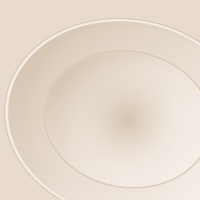

KeepRecipes is one spot for all your recipes and kitchen memories. Keep, cook, capture and share with your cookbook in the cloud.
Get Started - 100% free to try - join in 30 seconds
Substituting Gluten Gluten, a protein found in wheat flour, is what gives structure to baked goods. It gives breads, muffins, and cakes their soft spongy texture. To replace gluten, you'll need to use other thickeners like xanthan gum or guar gum in your baking. For each cup of gluten-free flour mix, add at least 1 teaspoon of gluten substitute. Xanthum Gum This comes from the dried cell coat of a microorganism called Zanthomonas campestris. You can purchase it in health food stores and some supermarkets. Guar Gum This powder comes from the seed of the plant Cyamopsis tetragonolobus. It is an excellent gluten substitute and it is available in health food stores and some supermarkets. Pre-Gel Starch This gluten substitute helps keep baked goods from being too crumbly. This, too, can be purchased at most health food stores. Gluten-Free Bread Recipes Homemade Mixes Start with recipes that use relatively small amounts of wheat flour like brownies or pancakes. Gluten-free versions taste almost the same as their wheat-based cousins. These two gluten-free flour mixtures can be substituted for wheat flour cup-for-cup: Gluten-Free Flour Mix I 1/4 cup soy flour 1/4 cup tapioca flour 1/2 cup brown rice flour Gluten-Free Flour Mix II 6 cups white rice flour 2 cups potato starch 1 cup tapioca flour These mixes can be doubled or tripled. You can also purchase gluten-free baking mixes at health food stores and some supermarkets. Potato Starch Flour This is a gluten-free thickening agent that is perfect for cream-based soups and sauces. Mix it a little with water first, then substitute potato starch flour for flour in your recipe, but use half the amount called for. It can be purchased in a health food store. Tapioca Flour This is a light, white, very smooth flour that comes from the cassava root. It gives baked goods a nice chewy texture. Try it in white bread or French bread recipes. It is also easily combined with cornstarch and soy flour. Soy Flour This nutty-tasting flour has a high protein and fat content. It's best when used in combination with other flours and for baking brownies, or any baked goods with nuts or fruit, which will mask any "beany" flavor. Cornstarch A refined starch that comes from corn, it's mostly used as a thickening agent for puddings, fruit sauces, and Asian cooking. It is also used in combination with other flours for baking. Corn Flour This flour is milled from corn and can be blended with cornmeal to make cornbread or muffins. It is excellent for waffles or pancakes. Cornmeal Cornmeal can be ground from either yellow or white corn. This is often combined with flours for baking. It imparts a strong corn flavor that is delicious in pancakes, waffles, or muffins. White Rice Flour This is an excellent basic flour for gluten-free baking. It is milled from polished white rice. Because it has such a bland flavor, it is perfect for baking, as it doesn't impart any flavors. It works well with other flours. White rice flour is available in most health food stores, and also in Asian markets. Look for types called fine-textured white rice flour. Brown Rice Flour Made from unpolished brown rice, brown rice flour retains the nutritional value of the rice bran. Use it in breads, muffins, and cookies.
Comments